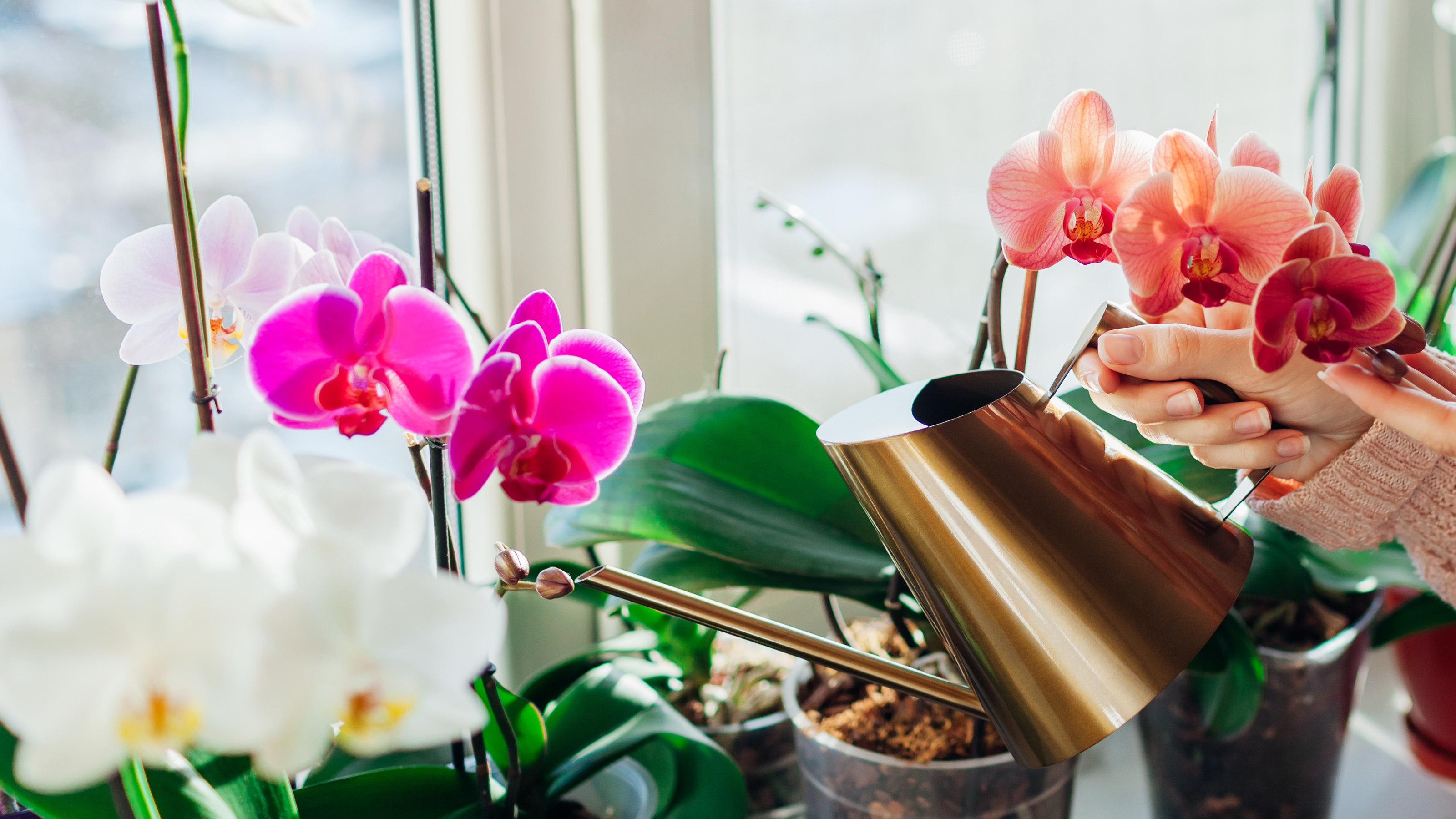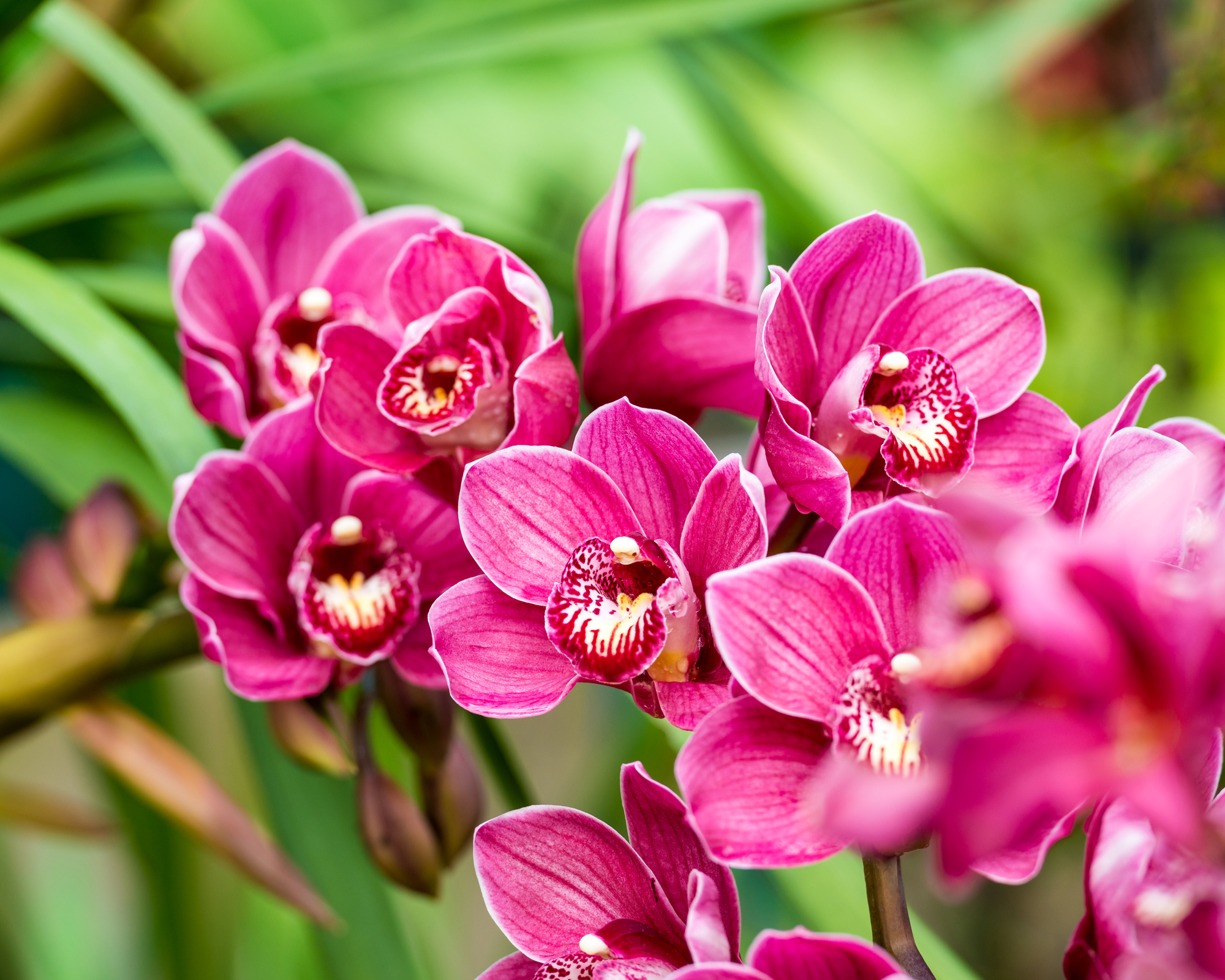Should you water an orchid with ice cubes? We asked an orchid grower...
Find out whether you should water an orchid with ice cubes or not according to a specialist orchid grower. Plus, other good methods for keeping your beautiful orchids well-hydrated

Wondering if you can and should water an orchid with ice cubes? The debate is a raging one among orchid lovers. Some might argue that ice cubes are ideal for slowly hydrating these exotic plants. Others argue that there are better ways to go about it.
Knowing how to water orchids properly is essential to keep them alive. If you've just bought one of your own and want to know whether ice cubes are a safe option, or if you've grown them for a while and want to find a simpler to keep yours in good health and looking beautiful, our expert advice on this orchid ice cube watering hack is for you.

Can you hydrate orchids with ice cubes?
The answer, broadly speaking, is 'yes'. Marcel Boonekamp, head grower at Just Add Ice Orchids, a specialist orchid grower, explains how ice cubes can be incorporated into your orchid care routine if approached properly, 'watering orchids with ice is an effective way to ensure an orchid receives the right amount of water.' The reason why so many people have trouble keeping their orchids alive is that they 'tend to overwater their plants, which can cause root rot.' The reality is that most orchids only need 'three ice cubes (approx. ¼ cup) a week to stay healthy.' That's way less than most of us tend to give our orchids when watering traditionally from a watering can or bottle.
Orchids are among the best indoor plants – if they get the care they need. The problem with orchids is that once their roots start to rot, it's very difficult, almost impossible, to keep them alive. Most houseplants react badly to overwatering, but in the case of orchids, the outcome likely will be fatal. So, if watering yours with ice cubes helps you not overwater, go ahead and add ice cubes to the top of your orchid. Contrary to the popular belief that watering with ice cubes will damage your orchid's roots, 'the slow melt doesn't harm flower longevity', according to Boonekamp.

This claim is supported by research. The Ohio State University and the University of Georgia teamed up to test out the ice cube orchid watering method for potential damage to the roots and leaves of the plant. They split 48 orchids into two groups, one watered with ice cubes and the other with room-temperature water. The results are reassuring: 'The orchids irrigated with ice cubes had the same flower longevity (number of days individual flowers remained open) and display life (number of days from when the plant was received to when the last flower wilted on each plant) compared to plants irrigated with room temperature water.' The leaf and root health of the plants 'were not negatively affected by ice cube irrigation.'
Orchid roots can be damaged by cold temperatures (below 20 °F), but you would have to expose the roots to those temperatures for much longer than the five-six hours during which the roots absorb meltwater from a couple of ice cubes.

How to water an orchid with ice cubes?
The researchers recommend 'three ice cubes, once a week. The ice cubes should be placed on top of the media, avoiding direct contact with the leaves. The water that remains in the bottom of the decorative pot should also be emptied to prevent damage to the roots.'
Get small space home decor ideas, celeb inspiration, DIY tips and more, straight to your inbox!
Obviously, significant fluctuations in ambient temperature will call for an adjustment in the number of ice cubes you use, but it's best to start with three. A healthy orchid will have beautiful, glossy green leaves and pale-green, juicy roots. If your orchid has 'wrinkled, flaccid leaves', it's under-watered, so increase the number of ice cubes. An orchid that has silvery-gray roots or roots that are going brown, is overwatered. Underwatering is much easier to fix than overwatering, so increase the number of ice cubes slowly.
Alternatives to the ice cube watering method
With all this said, the ice cube method is not the only watering method you can use to keep your orchids hydrated. Orchids are tropical plants that, in the wild, graft themselves onto tree trunks and absorb water from passing rains. This should always be your guideline for watering orchids – you don't want to stand them in water for too long. Some people like simply watering them under the running tap in their plastic pots.
Daniel McCurry, plant expert and owner of Alabama-based Father Nature Landscapes, likes to 'take all of my orchids every third weekend and set them down in the tub in six inches of water for 30 minutes. After soaking them, set them aside to fully dry before putting them back into the non-drip container that they typically are sold/ staged in.'
Allowing them to dry is a very important step – you want to make sure no water is dripping by the time you put them back into their planters. In addition to this watering regime, McCurry recommends fertilizing your orchids 'three times per year with a slow-release orchid fertilizer in the Spring, mid-summer, and Fall.'
Anna is a professional writer with many years of experience. She has a passion for contemporary home decor and gardening. She covers a range of topics, from practical advice to interior and garden design.